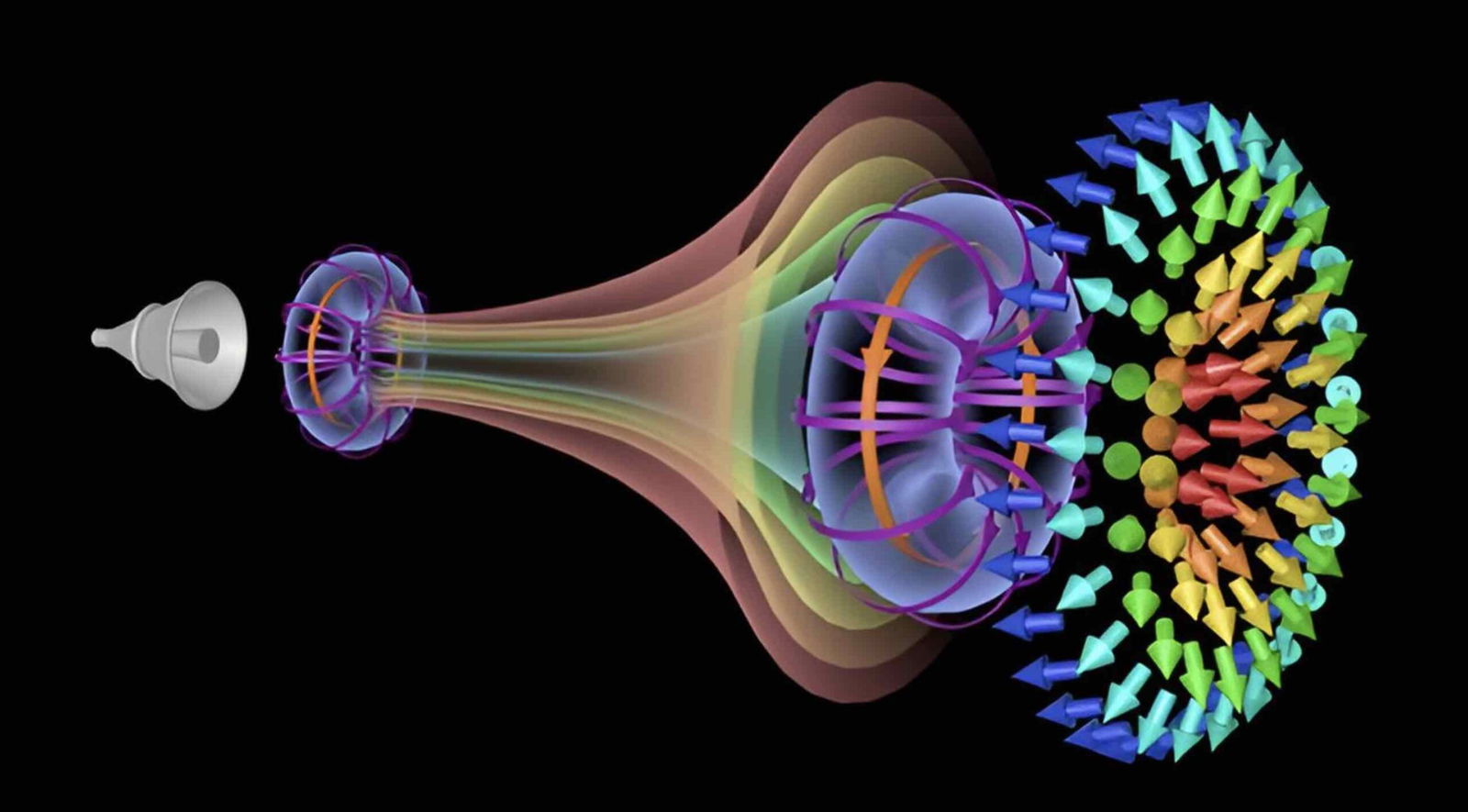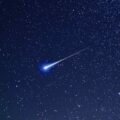An international team of physicists has developed a high-tech update to the classic air cannon, where the same principles that allow smoke rings to travel across a room are now being applied toward the creation of an electromagnetic vortex cannon.
Vortex rings, also known as toroidal vortexes, are intriguing phenomena that occur in familiar forms like smoke rings and air cannon blasts. In these examples, the vortex is formed when a fluid, either gaseous or liquid, is forced through a hole. Smoke rings are visible due to the coloration of the smoke, while vortex rings from an air cannon are formed from the invisible gases in Earth’s atmosphere.
When air is forced out of the cannon, it initially forms a rapidly expelled ball. This ball is quickly slowed at the edges due to friction with the hole’s edges, causing a mushroom cloud-like formation. The outer parts of this cloud are pulled inward, creating the ring shape. This spinning motion, similar to a ball rolling along a floor, allows the vortex ring to travel a significant distance before dissipating or losing kinetic energy.
A New Application of Old Principles
The researchers have taken the concept of vortex rings and applied it to electromagnetic waves. This international team, based in China, the UK, and Singapore, is not the first to investigate toroidal electromagnetic pulses, but they are the first to characterize their propagation dynamics and topological configurations. They built a device using a broadband conical horn antenna to launch microwave toroidal pulses.
In a statement accompanying the release of their paper, the team explained their novel creation: “The principle involves utilizing ultra-wideband, radially polarized, conical coaxial horn antennas to create a rotating electromagnetic wave structure. When the antenna emits, it generates an instantaneous pressure difference that forms these vortex rings, which maintain their shape and energy over long distances. The uniqueness of this method lies in its ability to produce electromagnetic pulses with complex topological features, such as skyrmions, that showcase remarkable resilience and self-healing properties during propagation.”
The team tested their device in a microwave anechoic chamber, which is designed to absorb reflections of microwaves. They used a linearly polarized horn probe, operating in the frequency range of 1-18 GHz, to receive the waves. This experiment marked the first experimental mapping of skyrmion textures. Analyzing the data, the team was impressed with the waveform’s resilience, suggesting a distinctive utility for many practical applications.
Applications of the Electromagnetic Vortex Cannon
“The potential applications of this technology are vast and exciting,” the team noted. While a traditional vortex cannon is used to push force, this new device has more peaceful applications, particularly in robust and efficient data transmission. The technology’s unique spectral and polarization qualities allow the vortex rings to carry more information than existing wave types, making them an excellent option for the future of network communications.
There are also potential military applications, especially in sensing. Just as smoke rings maintain their shape over long distances, the electromagnetic vortex rings’ integrity could make them exceptional for remote sensing and detection. Further research into the unique patterns found in these pulses could enable engineers to create highly precise sensor systems. Similar to radar, these systems could be expanded for meteorological data collection and, on a shorter range, for use in microscopy. “This work not only demonstrates the incredible versatility of electromagnetic vortex rings but also sets the stage for future innovations in wireless technology, creating opportunities to redefine our understanding of electromagnetic phenomena,” the team says.
The new paper, “Observation of Resilient Propagation and Free-Space Skyrmions in Toroidal Electromagnetic Pulses,” was published on August 14 in Applied Physics Reviews.
Ryan Whalen covers science and technology for The Debrief. He holds a BA in History and a Master of Library and Information Science with a certificate in Data Science. He can be contacted at ryan@thedebrief.org, and follow him on Twitter @mdntwvlf.

